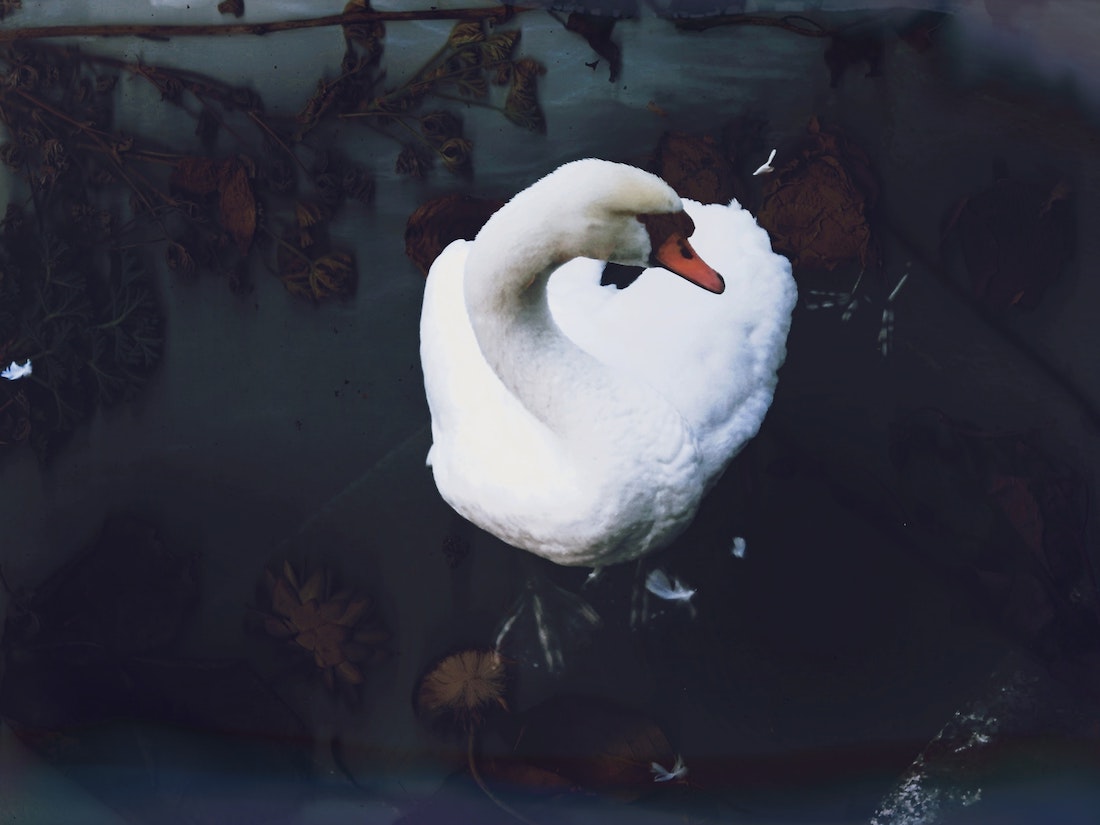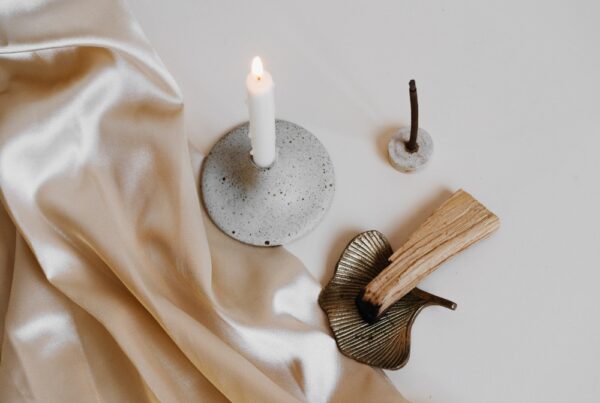
Did you know that your body is a gateway to your psychic self? You can pick up a lot of valuable intuitive information by paying attention to your body’s responses. If you want to know how you feel about something, observe how it effects your breathing, posture, muscle tension and heart rate. If your breathing is shallow or ragged, it’s a pretty good indication that something’s wrong. In this way, your body acts as a direct link to your inner knowing.
When you need to make a decision and you’re looking for clarity, feel into the wisdom of your body. Become as quiet and still as possible and listen to what your body is telling you. For example, maybe you’re trying to determine where you want to live, and you’re having trouble choosing between Hawaii and New Zealand. Meditate on each potential option and reflect on how your body feels in response to each. Your body will point the way. It’s a crucial part of your inner guidance system. Go with the option that feels good or “right” intuitively, fills you with peace and allows you to effortlessly drift off to sleep.
Connecting with your body may feel uncomfortable, confusing or alien at first and that’s okay. In modern (western) culture we are constantly plugged into what’s ‘out there’ on our screens, at the expense of what’s ‘in here’ (our own being and energy field). We are in a near constant state of distraction, multi-tasking and dissociation.
The danger is that we’re giving our power away to the energy of the ‘other’ and letting the mind run amok. Consequently, our physical and emotional needs are getting the short end of the stick. Practicing mindfulness, acting with intention and forming strong energetic boundaries (especially around tech) will help you to rebuild a close and loving relationship with your body. And you’ll be able to effortlessly pick up on the messages that come through. It’s like the radio, if you’re not tuned into the right channel, you won’t be able to hear the guidance.
An alternative approach to shadow work
Most approaches to shadow work involve a lot of self reflection and analysis such as talk therapy and journaling. And when we’re communing with the aspects of ourselves that we’ve rejected or disowned, we can come up against fierce internal resistance. Traditional forms of shadow work often entail thinking about the past and allowing yourself to show up fully for all of the feelings that arise.
Your ego, which wants to protect you at all costs, will do anything it can to deter you from this emotionally raw path towards inner transformation. For the ego, shadow work is a kind of death so it’s perceived as a threat. How can you loosen the ego’s desperate grip? By dropping out of your mind, where the ego resides, and into your body.
In Tony Crisp’s revolutionary book, Mind and Movement, he shares an unconventional movement practice which he calls coex. Coex stands for consciousness expansion because the practice of coex will illuminate parts of yourself that were previously unconscious. It’s essentially a shadow work exercise that uses the body as the means through which you can process and integrate unconscious material.
How can I begin using coex?
Coex uses movement to heal. What exactly comes through to be healed happens naturally and is not meant to be limited by the mind. It’s best to approach coex from a place of curiosity and optimism. Release any expectations. Maybe a physical ailment will come forward to be healed, or perhaps a deeply-rooted childhood wound. Instead of believing that you know best, surrender to the healing and allow the Universe to move through you. If you’d like, you can begin each session by affirming: “May this coex be for my highest good.”
While you can practice coex in a group setting or by yourself, in this post we’re going to explore how to do a solo session. I recommend doing coex once or twice a week for at least half an hour. There are two different types of coex- structured and unstructured. Below, I’ll teach you how to do each one.

The Structured Approach
- Put on some comfortable clothes and find a safe space where you can move around freely. Check your ego and self criticism at the door. Be open to whatever noises and movements want to flow through you.
- Stand or lie down in the center of your space and raise your arms above your head. In your mind’s eye picture an unplanted seed.
- Check in with yourself and recognize whether your body feels like an unplanted seed in this posture. The goal is to align your body with the idea and sense you have of the seed. This isn’t a pass or fail exercise. Be playful and experiment with different body positions until you’ve found one that feels right. Give yourself permission to have fun with it and take your time!
- Once you’ve found a body posture that matches your inner feeling of the seed, it’s time to take the next step. Allow yourself to explore what happens when the seed is planted in warm, fertile soil and begins to sprout? Continue your experiment by discovering what happens when the seed grows taller, unfurls its tender leaves, blossoms and completes its cycle. You may begin your journey as a seed feeling very firmly that you’re not ready to grow. And that’s perfectly okay too. Simply remain in the body position that feels like a seed until you notice a change stirring within you and a desire to grow, or until the half hour is over.
In addition to the unplanted seed exercise, you can try using the imagery of water, earth, air or the sun. According to Tony Crisp, “You can consider it a successful coex experience if some aspect of what arises is spontaneous or unexpected. Even if the unexpected does not emerge in the first session, it will do so as you learn to let go of thinking… and leave the body open to free expression.”
The Unstructured Approach
- The unstructured approach begins the same way. Put on some comfortable clothes and find a safe space where you can move around freely. Check your ego and self criticism at the door. Be open to whatever noises and movements want to flow through you.
- Begin by circling your arms above your head, down the opposite sides of your body with your arms fully extended and then upward, crossing the front of your trunk. Basically, you’re creating wide circles that cross in front of the body. This arm circling movement is intended to help you ease into coex. Think of it as training wheels. You can forget about this step once you feel comfortable entering coex without it.
- In the meantime, close your eyes and circle your arms, moving your awareness to the shape your hands are forming in space. As you start becoming aware of the shapes your hands are making, observe what feelings arise about how you would like to move.
- Allow yourself to ‘doodle’ and experiment, making any shapes your feelings or body guide you to do. Give yourself free reign to do any body position or movement, as active or passive as you desire. Allow sounds to accompany the movements if there is any desire to vocalize them and allow any emotions that go along with them as well.
- Remember that what you’re doing doesn’t have to make sense. You are allowing a part of yourself, maybe a primitive, non-verbal part or perhaps a shadow aspect, to express itself within a safe container free from rational criticism and the pressures of everyday life. Simply observe what unfolds, relax into any sensations or emotions that arise, and let your body and feeling sense guide what happens.
Although the movements that surface may appear random initially, after a few coex sessions you may begin to recognize a pattern or theme that’s emerging. The theme may symbolize your life situation, something happening within you (such as a creative breakthrough or emotions from your past) or the body’s wish to experience a cathartic release of energy or to mobilize itself and its desires. The symbolic elements (if that’s what they are) can make way for rational understanding.
Jung and the Transcendent Function
A naturopath sees illness or dis-ease through the lens of imbalance. It’s believed that an imbalance of the two basic energies within you (yin and yang, or the archetypal masculine and feminine) is at the root of many psychosomatic and emotional symptoms. Depth psychologist Carl Jung was convinced that humans have an ability called the Transcendent Function. The Transcendent Function is our inner wellspring that contains resources of information and wisdom within us that are typically overlooked.
People who are able to access this function and learn to work with it can transform their negative feelings and attitudes to more positive and inclusive ones. They often experienced a spontaneous healing of their physical ailments as well. Since the mind and the body are undeniably connected and our thoughts and beliefs often play a big part in the development of dis-ease, you can see how the Transcendent Function could be a groundbreaking tool for healing and consciousness expansion.
Unfortunately, Jung never left us with explicit instructions about how we can do this. Coex is Tony Crisp’s answer to Jung’s mysterious Transcendent Function. Coex is a remarkable self-regulatory practice that allows you to tap into your natural healing forces so that you can restore balance and cultivate oneness. The body is your portal to wholeness.





